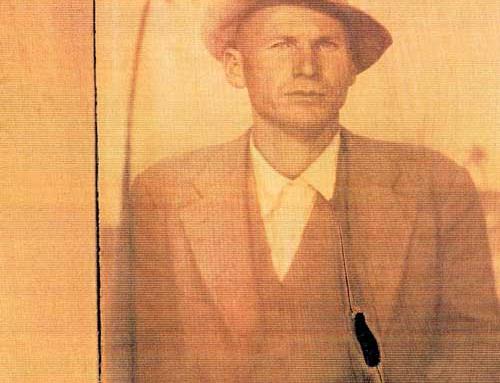In October of 1945, Janice Holt married Henry Giles in Louisville just after he returned from service in World War II. After four years in Louisville, she and Henry moved to a forty-acre farm on Giles Ridge, an area where they would live until her death in 1979 and his death in 1986.
By 1954, with Henry’s help, she had written and published eight books, all, with the exception of “The Kentuckians,” set in the rich culture of her adopted community. “Hill Man” was one of these books.
“Hill Man” was written in 1951, just after Janice had completed “40 Acres and No Mule,” an autobiographical account of their life in the hill country. Her first three novels had been published under the confining editorial policies of Westminster Press, a Presbyterian publishing house. “Hill Man” was declined, so she offered it to a commercial publisher, who rejected it—calling it formless, too episodic, and centered around an unattractive character.
Then she submitted it to a paperback publisher under the pseudonym, John Garth, and “Hill Man” was finally published in 1954 by Pyramid Books of New York with a first printing of 300,000 copies.
“Hill Man” was a radical departure from her earlier novels that had built for her a wholesome image and a large readership. Apparently chafing under the constrictions and revisions required by Westminster, she told her agent that it had been “a great joy to turn with freedom and a sense of integrity” to “Hill Man,” a book she valued for its earthiness and accuracy.
After reading the galley proofs, she wrote the publisher: “I was struck by its strength. It is the most realistic ridge book I have written, completely honest and presenting the truest picture of most of the ridge men.” Elsewhere she said, her protagonist, Rady, “is not fiction. He is fact.”
Rady Cromwell was a backwoods hero that most of her readers were not prepared to accept. Without the puritanical restraints of church and mainline publishers, Janice Holt Giles was free to write a more comprehensive, honest picture of hill life that included frank treatments of Rady Cromwell’s sexually active life. Her narrative was bold and daring to readers in the 1950s, but it will be mild and unexciting to today’s readers.
Although the novel is fleshed out with a gallery of colorful characters, the story belongs to Rady Cromwell, the son of a country preacher. By the time he was sixteen, Rady had rejected his father’s moral strictures. He learned to shoot craps, play stud poker, drink moonshine, and make all manner of mischief.
At twelve he was able to turn an ordinary hollow reed into a “touch-off,” a homemade gun that he used to win a turkey shoot. Before he was a grown man he had become a shrewd prankster with an ability to separate people from their money and land.
He was also a bold, crafty, hard-working, good-natured, inventive, exciting young man possessed with muscular good looks. For his daring and dangerous ways, he was admired by men and loved by women.
He was always the opportunist in the business of “bettering himself.” His other talents include playing his guitar and singing “song-ballats” like “Lord Thomas” and “Barbry Allen.”
Janice Holt Giles thoroughly understood this male-dominated culture, from the men’s fondness for guns and knives to their sudden itch to go “roistering around with the boys.”
Despite its setting in the mid-1920s and its authorship in the 1950s, “Hill Man” is a contemporary novel, with universal themes and patterns.
“Hill Man,” along with other books by Janice Holt Giles, is available at the Jesse Stuart Foundation Bookstore at 4440 13th Street in Ashland. For more information, call 606-326-1667 or email jsf@jsfbooks.com.
By James M. Gifford, Ph.D.
JSF CEO & Senior Editor



